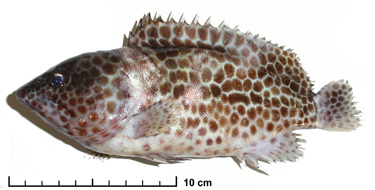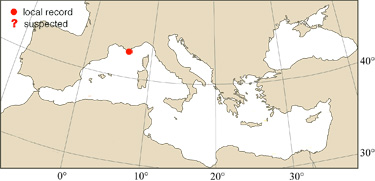
|
Relevant synonyms
Misidentification
Meristic formula
|
|
| photo : P. Lelong |
|
SHORT
DESCRIPTION
color : head and body covered with large, round close-set grey, dark brown to brown-reddish spots on off-white or light grey background. All fins covered with spots, becoming somewhat smaller at their margins.
size :
common 10-25 cm (max. 30 cm). |
DISTINGUISHING CHARACTERISTICS
Other serranids in the Mediterranean: lack of close-set spots on the body and fins forming network pattern. Other families: lack of three flat spines on the operculum. BIOLOGY / ECOLOGY
habitat : shallow waters, coral reefs and lagoons. Usually found down to 20 m, very rarely down to 50 m. |
|
1st
MEDITERRANEAN RECORD
|

|
|
DISTRIBUTION
|
ESTABLISHMENT SUCCESS
speculated reasons for success :
|
|
|
MODE OF
INTRODUCTION |
IMPORTANCE TO
HUMANS
|
|
KEY
REFERENCES
|